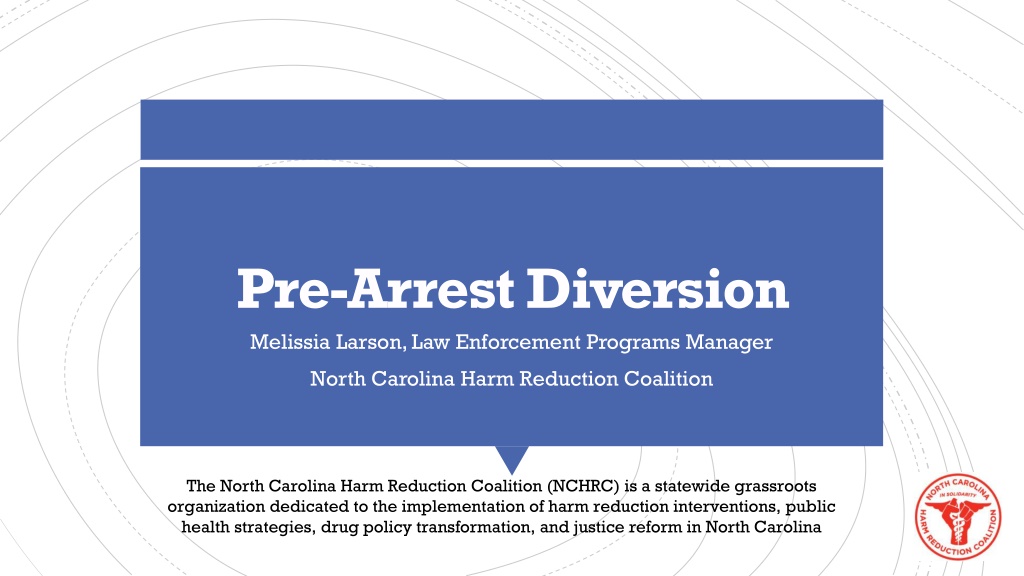Implementing LEAD Program for Pre-Arrest Diversion in North Carolina
North Carolina Harm Reduction Coalition (NCHRC) implements harm reduction interventions, public health strategies, and justice reform through programs like LEAD (Law Enforcement Assisted Diversion). LEAD diverts low-level drug offenders and sex workers to treatment instead of the traditional criminal justice system, aiming to reduce racial disparities, mass incarceration, and harm caused by criminalization. The program builds partnerships within communities for a warm hand-off to local treatment and supportive services.
Download Presentation

Please find below an Image/Link to download the presentation.
The content on the website is provided AS IS for your information and personal use only. It may not be sold, licensed, or shared on other websites without obtaining consent from the author. Download presentation by click this link. If you encounter any issues during the download, it is possible that the publisher has removed the file from their server.
E N D
Presentation Transcript
Pre-Arrest Diversion Melissia Larson, Law Enforcement Programs Manager North Carolina Harm Reduction Coalition The North Carolina Harm Reduction Coalition (NCHRC) is a statewide grassroots organization dedicated to the implementation of harm reduction interventions, public health strategies, drug policy transformation, and justice reform in North Carolina
Sequential Intercept Model Sequential Intercept Model
Example of Pre-Arrest Diversion (Intercept 1): LEAD Program LEAD (Law Enforcement Assisted Diversion) is a pre-arrest diversion program that utilizes officer discretion to divert low level drug offenders and sex workers from the traditional criminal justice system and link them into treatment. This linkage to services operates within a harm reduction framework to include intensive case management and peer support services.
Application of the LEAD Program Originally designed to address racial disparities in drug arrests Address the negative impact of mass incarceration on individuals and communities Address valid business and neighborhood concerns about health and safety Reduce harmful impact of criminalization on the marginalized populations within the sex trade continuum Help communities respond to public order issues stemming from unaddressed public health and human services needs -- addiction, untreated mental illness, homelessness, and extreme poverty Source: LEAD National Support Bureau www.leadbureau.org
Source: LEAD National Support Bureau www.leadbureau.org
LEAD is a program built upon partnerships with stakeholders within the community; to include the District Attorney s Office, the local treatment providers, LME/MCO s, and harm reduction/peer support partners. Intercept 1: Pre-Arrest LEAD is not about creating entirely new programs; it is about bringing existing stakeholders together who have a common goal of reducing crime and connecting people with substance use disorders to treatment and supportive services. Provides a warm hand-off to local treatment and supportive services
The overarching goals of pre-arrest diversion are to address behavioral health needs within a community- based model versus within the traditional criminal justice system. Intercept 1: Pre-Arrest LEAD sites experience at least a 60% reduction in criminal justice involvement among their participants as they engage in treatment and supportive services available to them through the program. Participants have a higher level of engagement in treatment and/or supportive services. The value of peer support





























